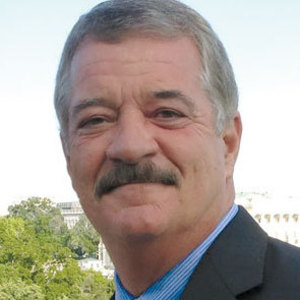The Promise of Ethanol in an Unknown Political Climate

January 19, 2017
BY Doug Durante
With more than three decades in Washington, I have certainly seen changes. Dealing with turnover in administrations and Congress is a fact of life here. But there is change, and then there is change. To say we are entering uncharted waters in 2017 would be an understatement, to say the least. Every new year and every new Congress presents a host of unknowns, but nothing like what we are seeing this year.
But that uncertainty also holds some excitement and promise as to the art of the possible. How the new administration deals with some of the pressing issues we are facing may be unclear but, as the saying goes, we don't know what we don't know. The good news is we do know the ethanol industry is a good fit for a new era of regulatory reform and free market principles.
With the renewable fuel standard (RFS) having matured in terms of demand-pull for the corn ethanol sector, we need to look for new markets and demand. We should be able to work with the new administration and capitalize on a new attitude in Washington based on removing unnecessary and burdensome regulations that thwart innovation and investment.
As we enter 2017, our mission at the Clean Fuels Development Coalition and in our partnership with the Urban Air Initiative hasn't changed. We believe we can significantly improve fuel quality and protect public health through higher blends. We can also help reduce carbon and allow automakers to produce high-gas mileage, high-performance vehicles.
While it is likely we will see a de-emphasis on carbon reduction and climate change at the federal level, there are still going to be many pockets of opportunity for ethanol. We want to continue to educate policymakers as to the true carbon footprint of corn ethanol. California and many other states remain committed to low-carbon fuels and numerous businesses and municipalities are going to remain on the low-carbon pathway. In addition, even if there is a slight rollback in automobile fuel economy standards, automakers will continue to develop more efficient cars to gain a competitive edge. Clean, low-carbon and competitively priced octane is key to that scenario.
So much of the focus and questions raised as to the future of ethanol and the RFS has been directed to the new president. It certainly appears Trump recognizes what we all know to be true, which is that domestic ethanol is an economic engine of rural America and needs to be supported. That said, Congress has ultimate jurisdiction over the RFS and we can expect a continual stream of bills to limit or repeal it. However, any changes to the RFS would require amendments to the Clean Air Act and there is little appetite in Congress to open that Pandora’s box because of the other issues that would follow.
So it shifts the focus back to the administration and what can be done to address concerns of Congress to make it a win-win for everyone. The answer to that question lies at the door of the U.S. EPA. A partial list of actions EPA could take include the following, all of which require no federal funds and none of which would require legislation:
• Allow the RVP waiver to apply to all ethanol blends because vapor pressure actually decreases as
volume increases.
• Approve an E30 certification fuel.
• Approve E30 for distribution through legacy pumps and for use in legacy vehicles.
• Reinstate vehicle mileage credits to encourage E30-optimized vehicles.
• Correct the MOVES model that would limit ethanol blends.
• Enforce the aromatic toxic caps on gasoline.
• Raise the minimum octane requirement for all gasoline.
• Update ethanol’s life-cycle analysis as required by law.
Enacting this wish list gets more ethanol into the pool. It would shatter the myth of the blend wall while bringing down RIN prices and creating new, market-driven demand values for ethanol.
So, while we don't know what we don't know, we do know what we do know. And that is that ethanol presents unique energy, economic and environmental benefits and should be a key building block for us to move forward.
Author: Doug Durante
Executive Director, Clean Fuels Development Coalition
Cfdcinc@aol.com
301-718-0077
Advertisement
Advertisement
Advertisement
Advertisement
Related Stories
The U.S. Department of Energy’s Office of Energy Efficiency and Renewable Energy is soliciting public comments on a preliminary plan for determining provisional emissions rates (PER) for the purposes of the 45Z clean fuel production credit.
On July 17, Iowa’s cost-share Renewable Fuels Infrastructure Program awarded $1.12 million in grants for 20 applicants to add B11 and 4 applicants to add E15 to retail sites. This was the first meeting following the start of RFIP’s fiscal year.
Par Pacific Holdings Inc., Mitsubishi Corp. and ENEOS Corp. on July 21 announced the signing of definitive agreements to establish Hawaii Renewables LLC, a joint venture to produce renewable fuels at Par Pacific’s refinery in Kapolei Hawaii.
A new study published by the ABFA finds that the U.S. EPA’s proposal to cut the RIN by 50% for fuels made from foreign feedstocks, as part of its 2026 and 2027 RVOs, could stall the growth of the biomass-based diesel (BBD) industry.
Reps. Mike Flood, R-Neb., and Troy A. Carter, Sr., D-La., on July 21 reintroduced the SAF Information Act. The bill directs the U.S. EIA to more explicitly include SAF data in its weekly and monthly reports.
Upcoming Events










